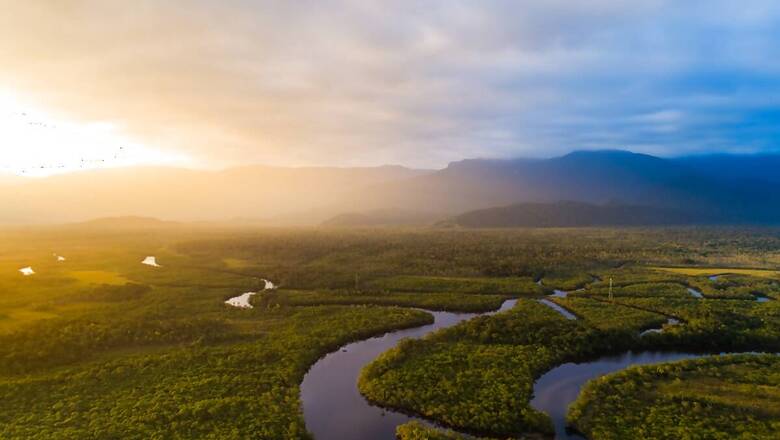
views
Despite their significance, deforestation in the world’s tropical forests has been continuously high since the 1980s, owing to growing human demand for food, fibre and fuel, as well as a failure to understand the significance of rainforests as healthy and productive ecosystems. In honour of World Rainforest Day 2021, which was founded in 2017 by Rainforest Partnership, here is a glance at the world’s largest surviving tropical rainforests.
Amazon Rainforest: The Amazon rainforest is the world’s biggest and most well-known tropical rainforest. The Amazon rainforest is more than three times larger than the Congo Basin, the world’s second-biggest rainforest, in terms of primary forest extent. It accounts for little more than one-third of all tree cover in the tropics.
Congo Rainforest: The Congo Basin, which covers an area of 3.7 million square kilometres, has the world’s second-biggest section of tropical rainforest. The Democratic Republic of the Congo (DRC) is home to the majority of the Congo rainforest, accounting for 60 percent of Central Africa’s lowland primary forest.
Australiasian Realm: The Australiasian rainforest contains tropical forests in New Guinea and north-eastern Australia, and also isolated islands that were linked when sea levels plummeted in the last ice age. As a result of this connection, these landmasses share plant and animal assemblages that are strikingly absent from islands further west.
Sundaland: Sundaland comprises the islands of Borneo, Sumatra, and Java, as well as Peninsular Malaysia. The island of Borneo, which is officially divided between Indonesia, Malaysia, and Brunei, contains the majority of the region’s surviving forest. From 2002 and 2019, Sundaland lost the most primary forest cover on the planet.
Indo-Burma: The Indo-Burma area is home to a diverse range of tropical forest types, including mangroves, lowland rainforests, and seasonal forests. Because of historical large-scale forest loss caused by human population growth, the remaining woods in this region are more scattered than in the other locations discussed thus far.
Mesoamerica: The Mesoamerican rainforests stretch from southern Mexico to southern Panama. Costa Rica’s forests are perhaps the most well-known in the area, due to the country’s world-renowned ecotourism sector, although the nation ranks sixth in terms of primary forest cover.
Wallacea: Wallacea is a biogeographic anomaly. When sea levels plummeted during the last ice age, islands to the west of this area became part of continental Asia, whereas islands to the east became part of the landmass created by Australia and New Guinea. Wallacea contains a unique mix of species, attracting plant and animal groups from both areas while also exhibiting high degrees of endemism.
Guinean forests of West Africa: The Guinean Forests of West Africa are lowlands tropical forests that stretch from Liberia and Sierra Leone to the Nigeria-Cameroon border. Agriculture, particularly small-holder subsistence farming and commercial cocoa, wood, and palm oil plantations, has significantly depleted these forests.
Atlantic Forest: The Atlantic Forest is formerly stretched from north-eastern Brazil into Argentina and Paraguay’s hinterlands. Agriculture and urbanisation have significantly diminished it now. Crops, plantations, and secondary woods make up the majority of the forest cover in this area.
Chocó-Darien: The Chocó jungle stretches from southern Panama to South America’s Pacific coast, passing across Colombia and Ecuador. It boasts to be the world’s wettest rainforest and the lowest rate of deforestation of all of the places discussed in this essay. Amerindian tribes and Afroindigenous or “maroon” groups coexist in the Chocó.
Read all the Latest Lifestyle News here




















Comments
0 comment